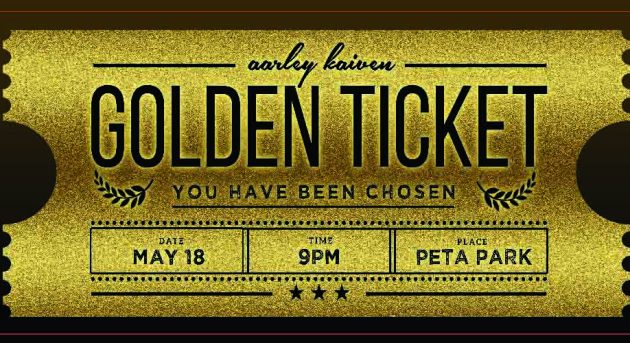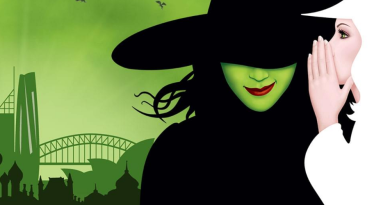What is the true cost of your discounted theatre ticket?
Discounted theatre tickets can have pros and cons for both audiences, producers, and the broader theatre industry. Discounts are universally popular, evoking a sense of satisfaction when you receive more than what you paid for. The appeal of discounts is not solely about the price, as a ticket priced at $100 but discounted to $50 is always more attractive to the consumer. A discount of 50% on the $100 ticket creates a sense of receiving greater value for the $50 spent, and leaves the customer with an extra $50 to spend elsewhere. While this may be beneficial for the customer, it raises questions about how it affects the producer.
On the one hand, discounted tickets can make live theatre more accessible to a wider range of audiences, particularly those who may not be able to afford full-price tickets. This can help to increase the overall reach and diversity of audiences and promote greater engagement with the arts.
Discounting tickets is nothing new. Products and services are in a perpetual state of flux across many and most industries. Many airlines used discounted ticket prices as part of their marketing and revenue strategies. At first glance, this seemed to be an intelligent way to fill seats and increase revenue, albeit at the cost of a lower profit margin.
The benefits included:
- Filling seats: If an airline had unsold seats on a flight, they would offer discounted tickets to fill those seats and generate revenue that would otherwise be lost. By offering lower prices, they could attract more price-sensitive customers who may not have been willing to pay full price for a ticket.
- Attract new customers: Offering discounted tickets could be a way for airlines to attract new customers who may not have flown with them before. By offering lower prices, they could entice customers to try their service and potentially become repeat customers in the future.
- Increase revenue: While discounted tickets may generate less revenue per ticket than full-priced tickets, they can also help airlines increase their overall revenue. This is because offering lower prices can encourage more customers to book flights, leading to more revenue overall.
- Competitive advantage: Offering discounted tickets also gave airlines a competitive advantage over other airlines that may not have been offering similar deals. This helped airlines stand out in a crowded marketplace and attract more customers.
Distinguishing between good and bad discounting is crucial, as while discounting can effectively increase sales, not all discounting strategies are equally effective. For example, if too many tickets are discounted, it can undermine the financial viability of a show or the production company. This can lead to a decline in the quality of productions or even the liquidation of production companies.
Long Term Impact
Indiscriminate discounting can be detrimental to a well-planned pricing strategy, as it may generate immediate gains but ultimately devalues the product. Furthermore, such a strategy sets a dangerous precedent for customers who purchase discounted items, leading them to anticipate future discounts and postponing purchases until prices drop again. This may result in the loss of customers who are conditioned to expect discounts, even if the initial offer was intended to be a one-time promotion. Reversing this cycle may require some temporary setbacks while customers are re-educated to value the product at its full price, but this is critical for establishing a sustainable discounting approach.
This is not all bad for the consumer, but what about the producer? Let’s do a hypothetical breakdown.
Most major commercial theatre venues in Australia have long tied partnerships with their principal ticket seller. After a producer negotiates a suitable deal with the venue, whether it be a set hire fee, or a pre-negotiated ticket split (80/20, 75/25, 50/50), the hidden costs just keep coming. Generally speaking, before the producer or venue see a dollar from any ticket sale, the principal ticket seller will get first dibs on every purchase. This will include an inside and outside charge, which is either included into the cost of the overall ticket, or added to the total cost at the end. This charge could be anywhere from 8-10% of the overall ticket price. So let’s say on a $100 ticket, the principal ticket seller takes their $8, and leaves $92 left over for the taking. Now some may think, $8 doesn’t seem like that much. Multiply this with the number of seats in a venue, and then by the number of performances for a show. Well on a sell out season, that equates to a lot of money for someone who has the monopoly on a venue and acts as the middle man between the producer/venue and customer. After this inside charge has been sucked up, pending negotiations, then roughly 10% ($9.2) of this remaining $92 is paid to the rights holder as royalties.
What’s left over? $82.80.
Hypothetically, let’s say the producer and venue decided on a 75/25 ticket split respectively, as opposed to a fixed venue hire fee. The venue take their 25% ($20.70) leaving the producer $62.1 of the remaining ticket. Now let’s remove 10% GST and then the cost of wages, set designers, lighting designers, sound designers and advertising costs and things start looking pretty hairy.
Well, it’s still a few months out from your show opening, but you just don’t have the pre-sale figures you were hoping for…. What to do! Run a ticket promotion of course! Flash sale 50% off. Redo all those calculations with the above deductions and you can start to see why although discounted tickets appear to be a wonderful gift from the gods for the consumer, they can be a producers worst nightmare. What makes this situation even worse, is that fear may prompt many a producer to perpetuate the pre-conditioned behaviour of consumers waiting for the last minute to seize a last minute deal from a discounted ticket outlet.
So who holds all the risk? Well the principal ticket seller get their inside charge, regardless of whether the show goes on or not. The venue have taken a bet, albeit with comparatively significantly less financial risk, by opting for a ticket split over a fixed hire fee. If the show’s a flop, then they may not get what they would normally charge for their fixed venue hire fee, but let’s not forget that they capitalise on all the food and drink purchases sold during each performance.
The buck stops with the producer and their gaggle of investors.
At this stage it’s a safer bet, betting on the winner of the Melbourne cup than it is betting on a sell out commercial theatre show.
A smarter way of pushing discounted tickets, without affecting the image or brand of a production company, is to sell ‘lottery tickets’. This is somewhat similar to how hotels would sell rooms on mystery hotel Dotcom. God forbid anyone found out that the Palazzo Versace had less than 40% occupancy and were selling their premium rooms for 70% off. But it is a much smarter spin on the void of discounting tickets.
Now things are also a lot rosier when you have government subsidised funds, set up to help offset the risk of needing a defibrillator to flailing ticket sales.
While discounts can increase access to the arts, they can also have negative consequences for the financial viability of theatre companies and future productions. As such, it is important for producers and theatre companies to carefully consider the benefits and costs of discounted tickets and to strike a balance that promotes both accessibility and financial sustainability. Discounts are universally appreciated, but it is crucial to ensure that the discount is justified. By doing so, discounting can align with the goals of the organisation and become an extension of its overall objectives.



